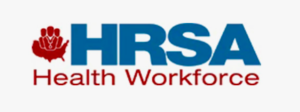- CMS: Medicare Program; Implementation of Prior Authorization for Select Services for the Wasteful and Inappropriate Services Reduction (WISeR) Model
- Public Inspection: CMS: Medicare Program: Implementation of Prior Authorization for Select Services for the Wasteful and Inappropriate Services Reduction Model
- CMS: Secretarial Comments on the CBE's (Battelle Memorial Institute) 2024 Activities: Report to Congress and the Secretary of the Department of Health and Human Services
- HHS: Patient Protection and Affordable Care Act: Marketplace Integrity and Affordability
- HRSA Announces Action to Lower Out-of-Pocket Costs for Life-Saving Medications at Health Centers Nationwide
- Public Inspection: HHS: Patient Protection and Affordable Care Act: Marketplace Integrity and Affordability
- Increased Risk of Cyber Threats Against Healthcare and Public Health Sector
- Eight Hospitals Selected for First Cohort of Rural Hospital Stabilization Program
- Announcing the 2030 Census Disclosure Avoidance Research Program
- CMS: Medicare Program; Hospital Inpatient Prospective Payment Systems for Acute Care Hospitals and the Long-Term Care Hospital Prospective Payment System and Policy Changes and Fiscal Year 2026 Rates; Requirements for Quality Programs; and Other Policy Changes; Correction
- CMS: Medicare Program; Hospital Inpatient Prospective Payment Systems for Acute Care Hospitals and the Long-Term Care Hospital Prospective Payment System and Policy Changes and Fiscal Year 2026 Rates; Requirements for Quality Programs; and Other Policy Changes; Correction
- CMS: Medicare and Medicaid Programs; Contract Year 2026 Policy and Technical Changes to the Medicare Advantage Program, Medicare Prescription Drug Benefit Program, Medicare Cost Plan Program, and Programs of All-Inclusive Care for the Elderly; Correction
- CMS: Medicare and Medicaid Programs; Contract Year 2026 Policy and Technical Changes to the Medicare Advantage Program, Medicare Prescription Drug Benefit Program, Medicare Cost Plan Program, and Programs of All-Inclusive Care for the Elderly; Correction
- CMS: Medicare Program; Prospective Payment System and Consolidated Billing for Skilled Nursing Facilities; Updates to the Quality Reporting Program for Federal Fiscal Year 2026
- CMS: Medicare Program; FY 2026 Hospice Wage Index and Payment Rate Update and Hospice Quality Reporting Program Requirements
Pennsylvania Health Department Offers Implicit Bias Training for Health Care Professionals
The Pennsylvania Department of Health Office of Health Equity is hosting virtual implicit bias trainings for all healthcare professionals in Pennsylvania. There are multiple dates and times available to reach all groups. The focus of this free workshop is to familiarize health care professionals to a framework for understanding how the experience of implicit biases and microaggressions impact health care experiences and outcomes for patients. Key strategies for recognizing and responding to implicit bias and microaggressions will be shared. Registration is available.
National Collaboration Formed to Address Cybersecurity at Rural Hospitals
The White House announced their collaborative efforts with Microsoft and Google that will provide a range of free or discounted cybersecurity services to rural hospitals across the country to help them in their efforts to prevent cyberattacks.
Microsoft has committed to working in close collaboration with The White House, the National Rural Health Association (NRHA), and the American Hospital Association (AHA) to coordinate the rollout, adoption and effectiveness of the program.
“Rural hospitals face a unique challenge in cybersecurity, balancing limited resources with the increasing sophistication of cyberthreats, which puts patient data and critical healthcare infrastructure at risk,” said Alan Morgan, chief executive officer of NRHA. “This important partnership with Microsoft will help ensure that rural hospitals are prepared in the future to meet this rising threat in small rural facilities.”
As part of this initiative to improve security and resilience of our rural hospital system, these private sector partners have committed to the following:
- For independent Critical Access Hospitals and Rural Emergency Hospitals, Microsoft is extending its nonprofit program to provide grants and up to a 75% discount on security products optimized for smaller organizations.
- For participating larger rural hospitals already using eligible Microsoft solutions, Microsoft is providing its most advanced security suite at no additional cost for one year. Additionally, Microsoft will extend security updates for Window 10 to participating hospitals for one year at no cost.
- Microsoft will also provide free cybersecurity assessments by qualified technology security providers and free training for frontline and IT staff at eligible rural hospitals throughout the country to deepen our resiliency to malicious cyberattacks.
- Google will provide endpoint security advice to rural hospitals and non-profit organizations at no cost, and eligible customers can get discounted pricing for communication and collaboration tools and security support and a pool of funding to support software migration.
- In addition, Google is committing to launch a pilot program with rural hospitals to develop a packaging of security capabilities that fit these hospitals’ unique needs.
Federal Administration Invests $11 Million to Expand Medical Residencies in Rural Communities

The U.S. Department of Health and Human Services (HHS), through the Health Resources and Services Administration (HRSA), awarded more than $11 million to 15 organizations to establish new residency programs in rural communities. HHS Secretary Xavier Becerra and White House Domestic Policy Advisor Neera Tanden announced the new awards while visiting rural health clinic in Wisconsin Rapids, Wisconsin today. Building on HRSA’s Enhancing Maternal Health Initiative, one program will create the first obstetrics and gynecology Rural Track Program in the country, and six others will develop new family medicine residency programs with enhanced obstetrical training in rural communities.
“Every American should have access to high-quality health care no matter where they live. That is why HHS is investing in programs that improve and expand access in geographic areas that have historically been underserved,” said HHS Secretary Xavier Becerra. “Training more doctors in our country’s rural areas is a proven strategy to recruit and retain doctors to serve rural communities. By funding new residency programs focused on OB-GYN training, we can help eliminate maternal care deserts, an important step in making pregnancy and childbirth safer.
“Rural communities need physicians, and the Health Resources and Services Administration is committed to helping build this workforce through steps like our work to create rural residency programs,” said HRSA Administrator Carole Johnson. “This funding will help build pathways for rural students to become doctors and help rural communities recruit and train more doctors. We are particularly pleased to support new programs aimed at training new physicians to care for pregnant women.”
Retaining and recruiting physicians in underserved and rural areas is a critical priority of the Biden-Harris Administration. These awards build on nearly $54 million that HRSA has invested in the Rural Residency Planning and Development Program (RRPD) since 2019. Past recipients of RRPD awards have created 46 accredited rural residency programs and have been approved to train 575 resident physicians overall. In this year’s 2024 Residency Match, RRPD-created residency programs matched 158 new residents who will start training this summer.
Award recipients will each receive up to $750,000 over three years to establish new rural residency programs. They will use this funding to support accreditation costs, curriculum development, faculty recruitment and retention, resident recruitment activities, and consultation services for program development. Many of today’s awardees will implement a Rural Track Program, which makes it possible for residency programs to provide their residents with experience in rural settings and increase access to health care in rural areas.
Access the list of awardees here.
Is “Social Infrastructure” the Solution to Loneliness and Social Isolation in Rural America?
A feature article in the latest edition of The Rural Monitor examines the ways that some rural leaders are finding to help their neighbors connect.
Analyzing Rural Enrollment in Qualified Medicare Beneficiary Program Lags Behind Urban
 The latest Report to Congress from the non-partisan Medicaid and Children’s Health Insurance Program (CHIP) Payment and Access Commission (MACPAC) shows that the number of rural Qualified Medicare Beneficiaries (QMBs) who also receive full Medicaid benefits stayed relatively the same between 2010 and 2021, while the number living in urban areas increased. These “QMB plus” enrollees receive assistance from Medicaid with their Medicare premiums and cost sharing plus full Medicaid benefits through eligibility pathways, such as Supplemental Security Income benefits and the aged, blind, and disabled pathway for individuals who are low income and age 65 or older or who have a qualifying disability. This growing disparity between urban and rural enrollment may indicate that there are opportunities for future outreach to enroll more eligible rural enrollees in this assistance program. This report also provides recommendations to Congress to increase transparency in Medicaid and CHIP financing, tools that states can use to optimize state Medicaid agency contracts, and improvements to demographic data collection in Medicaid.
The latest Report to Congress from the non-partisan Medicaid and Children’s Health Insurance Program (CHIP) Payment and Access Commission (MACPAC) shows that the number of rural Qualified Medicare Beneficiaries (QMBs) who also receive full Medicaid benefits stayed relatively the same between 2010 and 2021, while the number living in urban areas increased. These “QMB plus” enrollees receive assistance from Medicaid with their Medicare premiums and cost sharing plus full Medicaid benefits through eligibility pathways, such as Supplemental Security Income benefits and the aged, blind, and disabled pathway for individuals who are low income and age 65 or older or who have a qualifying disability. This growing disparity between urban and rural enrollment may indicate that there are opportunities for future outreach to enroll more eligible rural enrollees in this assistance program. This report also provides recommendations to Congress to increase transparency in Medicaid and CHIP financing, tools that states can use to optimize state Medicaid agency contracts, and improvements to demographic data collection in Medicaid.
Examining Risk Factors for Poor Health Among U.S. Older Adults in Rural and Urban Areas: Injury, Food Insecurity, and Lack of Social and Emotional Support
 Among key findings in this brief from the University of Minnesota Rural Health Research Center:
Among key findings in this brief from the University of Minnesota Rural Health Research Center:
- Nearly 30 percent of rural and urban older adults reported experiencing at least one of the selected risk factors (injury, food insecurity, or lack of social and emotional support).
- Of the three risk factors, lack of social and emotional support was the most common, reported by over 18 percent of older adults from both rural and urban areas.
- Injury was the second-most reported risk factor and was more commonly reported by rural than urban older adults.
- Food insecurity was experienced by a slightly higher percentage of rural older adults than those in urban areas.
Participate in the HRSA Grantee Satisfaction Survey
 – Deadline Extended. Each program director of active HRSA grants has received an invitation to take our new and improved Grantee Satisfaction Survey. With the highest possible response rate through June 24, we can pinpoint crucial areas for action. For general questions about the survey, contact HRSAGranteeSurvey@hrsa.gov
– Deadline Extended. Each program director of active HRSA grants has received an invitation to take our new and improved Grantee Satisfaction Survey. With the highest possible response rate through June 24, we can pinpoint crucial areas for action. For general questions about the survey, contact HRSAGranteeSurvey@hrsa.gov
CRS Answers FAQs about Federal Funding for Health Care Facilities
 The Congressional Research Service (CRS) compiles Frequently Asked Questions (FAQ) with background information on federal programs, including those that may be available to support facilities during an emergency or natural disaster. There are many references to rural throughout, describing facility types, payment models, and rural-specific funding.
The Congressional Research Service (CRS) compiles Frequently Asked Questions (FAQ) with background information on federal programs, including those that may be available to support facilities during an emergency or natural disaster. There are many references to rural throughout, describing facility types, payment models, and rural-specific funding.
White House Releases Factsheet Highlighting Efforts Toward Cybersecurity in Healthcare
 Responding to recent cyber attacks in the health care sector, the White House outlined a number of actions to mitigate further disruption to providers and patients. The factsheet notes rural providers such as Critical Access Hospitals and Rural Emergency Hospitals are particularly vulnerable and details commitments from leading technology companies to provide free and low-cost resources for rural hospitals across the country.
Responding to recent cyber attacks in the health care sector, the White House outlined a number of actions to mitigate further disruption to providers and patients. The factsheet notes rural providers such as Critical Access Hospitals and Rural Emergency Hospitals are particularly vulnerable and details commitments from leading technology companies to provide free and low-cost resources for rural hospitals across the country.
HRSA Makes Awards for the Rural Health Network Development Planning Program

The Federal Office of Rural Health Policy, located in HRSA, awarded approximately $3 million to 30 awardees through the Rural Health Network Development Planning Program to support organizations in their efforts to develop integrated health networks to conduct planning activities over the course of one year, with the goal of expanding access and improving quality of care in the rural communities they serve. The project period is July 1, 2024 through June 30, 2025.
